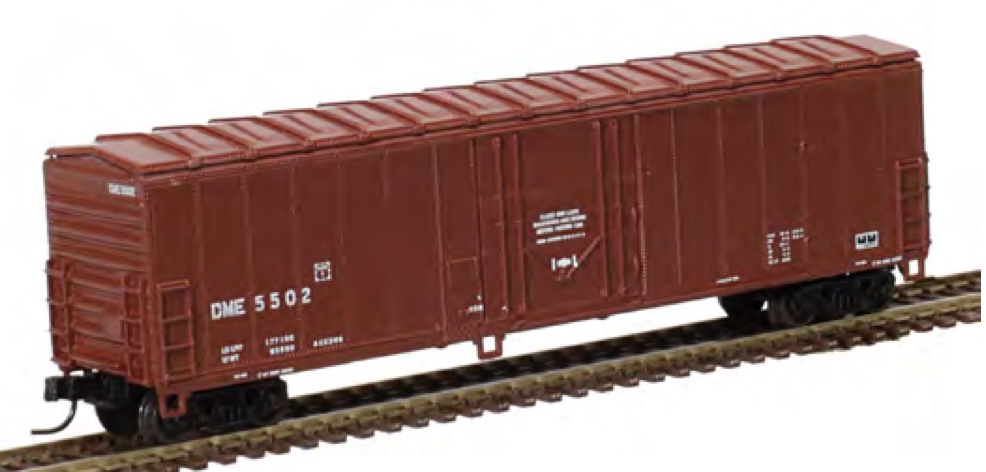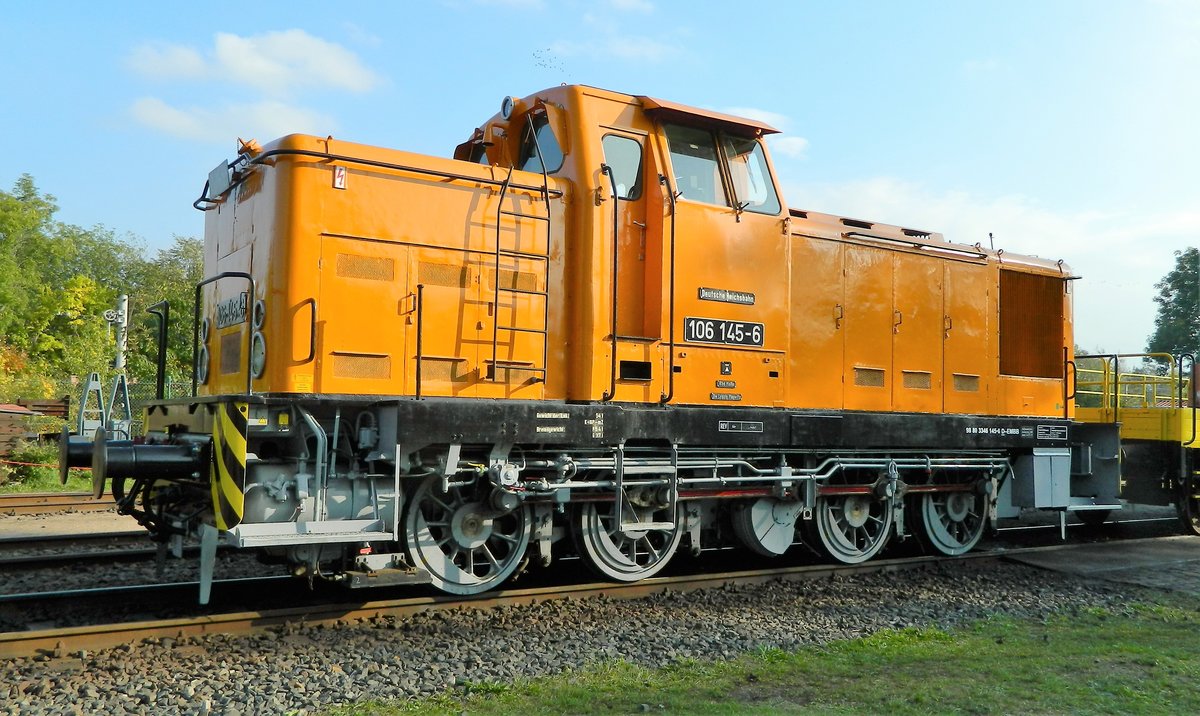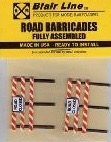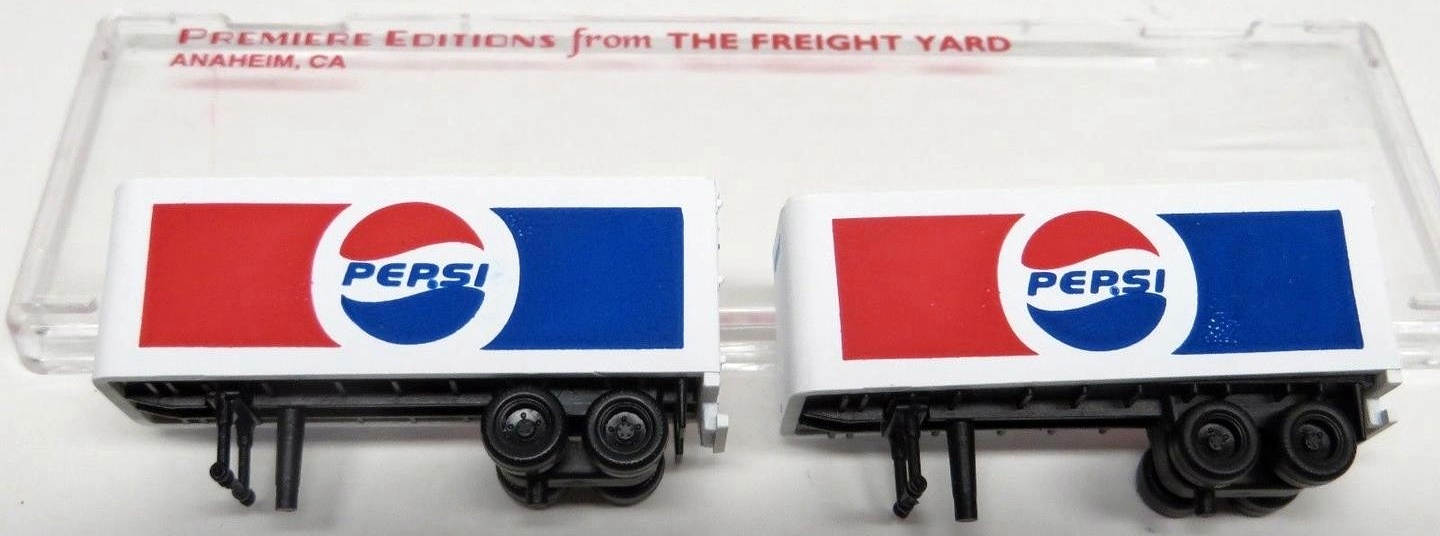Specific Item Information: Between 1963 and 1965, the Chicago Ridge plant of North American Car Company (NACC) produced nearly 750 of their first homegrown RBL, an inside post, or “smoothside” car. Effectively a transitional design between the Pacific Car and Foundry offset door cars, and the later, and more commercially successful, outside post RBLs, this car featured a centered plug door and was only available in a single 50’ 1” interior length. Though not as numerous as the outside post variations, as lease cars, they could be found sporting numerous colorful paint schemes throughout their long lifetimes from the 60’s through the early 2000’s.
Road Name History: The DM&E launched in 1986 as a spin-off of Chicago & North Western. The mainline ran from Winona, Minnesota (where there are Mississippi River docks) west to Rochester, Mankato, then onto Pierre and Rapid City, South Dakota. At that point the line split with one leg headed west to Colony, Wyoming, and the other leg headed south to Crawford, Nebraska. There were also a few other branchlines. Total mileage was 965 miles (putting it between Chicago & Eastern Illinois and Montana Rail Link in relative size.)
Operations began with 39 locomotives, mostly rebuilt SD9’s of Milwaukee Road heritage. Eventually DM&E dumped these first generation engines and in later years had a fleet of 69 rebuilt SD40-2’s, GP40-2’s, GP38-2’s, and a few one-offs. They also had about 5,000 freight cars, mostly grain hoppers.
In 1997, DM&E announced their intention to build a line to the huge coal reserves in Wyoming’s Powder River Basin. The project would have included rebuilding nearly the entire mainline plus building a new (and long) branch to reach the Basin. It would have been the biggest new construction since Great Northern’s Oregon Trunk in 1931. They did receive permission from the government but NIMBY opposition dragged out the start of construction for many years.
In 2008, The Dakota Minnesota & Eastern and sister road Iowa Chicago & Eastern were purchased by Canadian Pacific. After a bit of study, CPR wisely backed away from the Powder River Project.
Operations began with 39 locomotives, mostly rebuilt SD9’s of Milwaukee Road heritage. Eventually DM&E dumped these first generation engines and in later years had a fleet of 69 rebuilt SD40-2’s, GP40-2’s, GP38-2’s, and a few one-offs. They also had about 5,000 freight cars, mostly grain hoppers.
In 1997, DM&E announced their intention to build a line to the huge coal reserves in Wyoming’s Powder River Basin. The project would have included rebuilding nearly the entire mainline plus building a new (and long) branch to reach the Basin. It would have been the biggest new construction since Great Northern’s Oregon Trunk in 1931. They did receive permission from the government but NIMBY opposition dragged out the start of construction for many years.
In 2008, The Dakota Minnesota & Eastern and sister road Iowa Chicago & Eastern were purchased by Canadian Pacific. After a bit of study, CPR wisely backed away from the Powder River Project.
Brand/Importer Information: In 1924 Stephan Schaffan, Sr. founded the Atlas Tool Company in Newark, New Jersey. In 1933 his son, Stephan Schaffan, Jr., came to work for his father at the age of sixteen. Steve Jr. built model airplanes as a hobby and frequented a local hobby shop. Being an enterprising young man, he would often ask the owner if there was anything he could do to earn some extra spending money. Tired of listening to his requests, the hobby-store owner threw some model railroad track parts his way and said, "Here, see if you can improve on this".
In those days, railroad modelers had to assemble and build everything from scratch. Steve Jr. created a "switch kit" which sold so well, that the entire family worked on them in the basement at night, while doing business as usual in the machine shop during the day.
Subsequently, Steve Jr. engineered the stapling of rail to fiber track, along with inventing the first practical rail joiner and pre-assembled turnouts and flexible track. All of these products, and more, helped to popularize model railroading and assisted in the creation of a mass-market hobby. The budding entrepreneur quickly outgrew the limitations of a basement and small garage operation. Realizing they could actually make a living selling track and related products, Steve and his father had the first factory built in Hillside, New Jersey at 413 Florence Avenue in 1947. On September 30, 1949, the Atlas Tool Company was officially incorporated as a New Jersey company.
In 1985, Steve was honored posthumously for his inventions by the Model Railroad Industry Association and was inducted into the Model Railroad Industry Hall of Fame in Baltimore, Maryland. In addition, Steve was nominated and entered into the National Model Railroad Association Pioneers of Model Railroading in 1995.
In the early 1990s, the Atlas Tool Company changed its name to Atlas Model Railroad Company, Inc.
In those days, railroad modelers had to assemble and build everything from scratch. Steve Jr. created a "switch kit" which sold so well, that the entire family worked on them in the basement at night, while doing business as usual in the machine shop during the day.
Subsequently, Steve Jr. engineered the stapling of rail to fiber track, along with inventing the first practical rail joiner and pre-assembled turnouts and flexible track. All of these products, and more, helped to popularize model railroading and assisted in the creation of a mass-market hobby. The budding entrepreneur quickly outgrew the limitations of a basement and small garage operation. Realizing they could actually make a living selling track and related products, Steve and his father had the first factory built in Hillside, New Jersey at 413 Florence Avenue in 1947. On September 30, 1949, the Atlas Tool Company was officially incorporated as a New Jersey company.
In 1985, Steve was honored posthumously for his inventions by the Model Railroad Industry Association and was inducted into the Model Railroad Industry Hall of Fame in Baltimore, Maryland. In addition, Steve was nominated and entered into the National Model Railroad Association Pioneers of Model Railroading in 1995.
In the early 1990s, the Atlas Tool Company changed its name to Atlas Model Railroad Company, Inc.
Item created by: CNW400 on 2021-09-14 11:31:27
If you see errors or missing data in this entry, please feel free to log in and edit it. Anyone with a Gmail account can log in instantly.
If you see errors or missing data in this entry, please feel free to log in and edit it. Anyone with a Gmail account can log in instantly.









